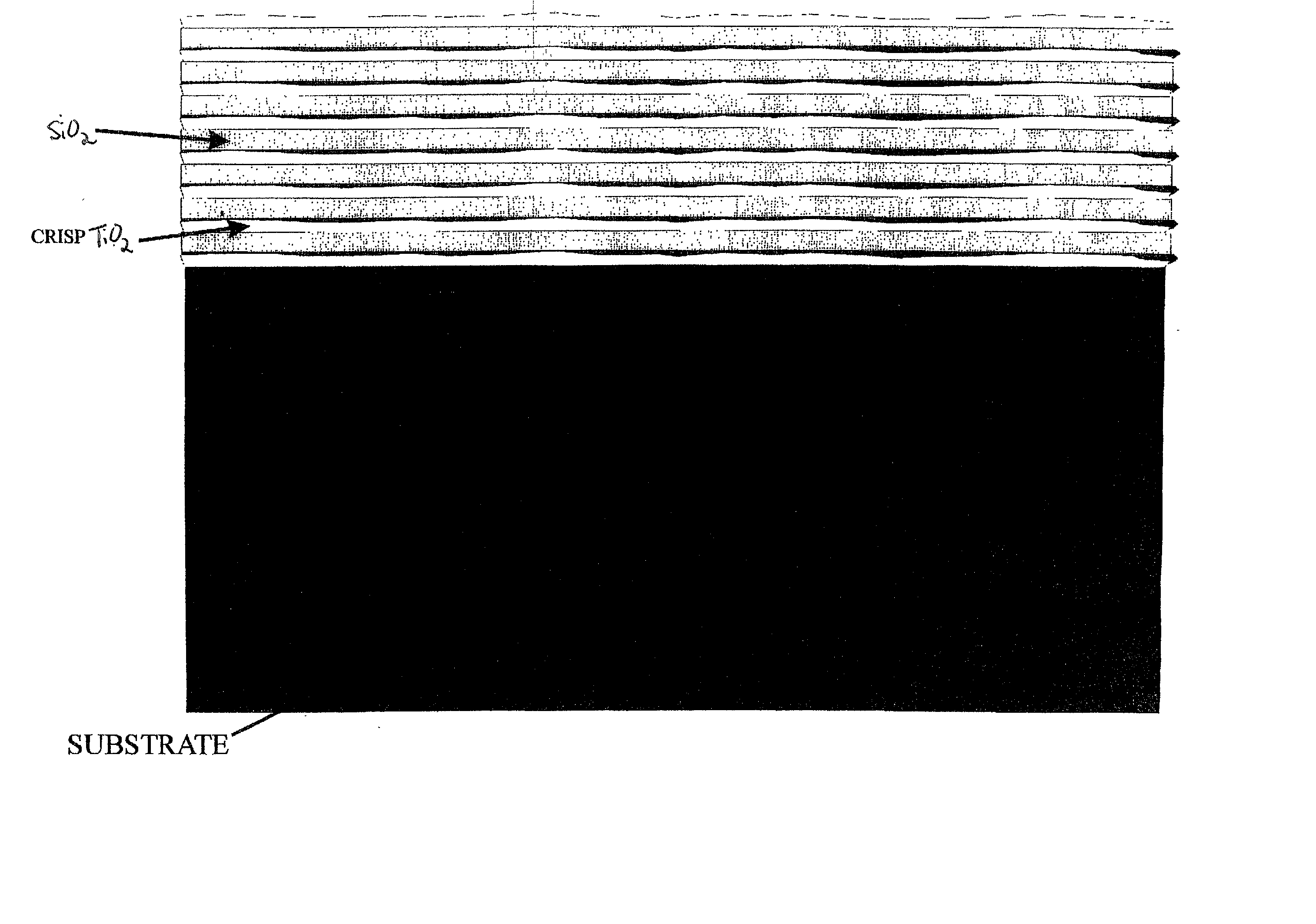Optical filter construction by atomic layer control for next generation dense wavelength division multiplexer
a technology of atomic layer control and optical filter, which is applied in the direction of optical elements, polycrystalline material growth, instruments, etc., can solve the problems of cracking and delamination of coatings greater than 3.0 .mu.m thick, lack of thickness and roughness control, and intrinsic stress. compressive
- Summary
- Abstract
- Description
- Claims
- Application Information
AI Technical Summary
Benefits of technology
Problems solved by technology
Method used
Image
Examples
Embodiment Construction
[0026] Referring now to the drawings, which are for purposes of illustrating at least one embodiment of the invention only, and not for purposes of limiting the invention, FIG. 1 shows an optical filter which uses alternating layers of high index materials such as, but not limited to, titanium dioxide (TiO.sub.2, n=2.2 @ 1.55 .mu.m), amorphous silicon (Si, n=3.46 @ 1.55 .mu.m), and tantalum pentoxide (Ta.sub.2O.sub.5, n=2.05 @ 1.55 .mu.m), and low index materials such as, but not limited to, silicon dioxide (SiO.sub.2, n=1.45 @ 1.55 .mu.m) and magnesium fluoride (MgF.sub.2, n=1.35 @ 1.55 .mu.m).
[0027] The high index layers are grown with a self-limiting deposition process, which include, but are not limited to, atomic layer epitaxy (ALE), pulsed chemical beam epitaxy (PCBE), molecular layer epitaxy (MLE), or molecular beam epitaxy (MBE), which can result in layer-by-layer growth. In some cases a polycrystalline or amorphous layer will grow but the atomic layer control is maintained....
PUM
| Property | Measurement | Unit |
|---|---|---|
| thick | aaaaa | aaaaa |
| surface roughness | aaaaa | aaaaa |
| FWHM | aaaaa | aaaaa |
Abstract
Description
Claims
Application Information
 Login to View More
Login to View More - R&D
- Intellectual Property
- Life Sciences
- Materials
- Tech Scout
- Unparalleled Data Quality
- Higher Quality Content
- 60% Fewer Hallucinations
Browse by: Latest US Patents, China's latest patents, Technical Efficacy Thesaurus, Application Domain, Technology Topic, Popular Technical Reports.
© 2025 PatSnap. All rights reserved.Legal|Privacy policy|Modern Slavery Act Transparency Statement|Sitemap|About US| Contact US: help@patsnap.com


